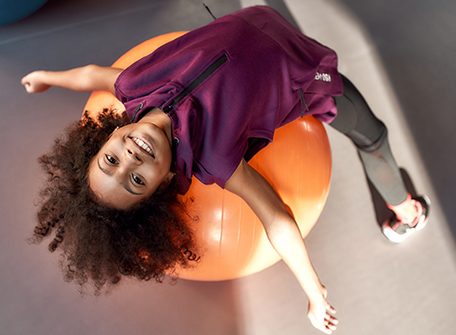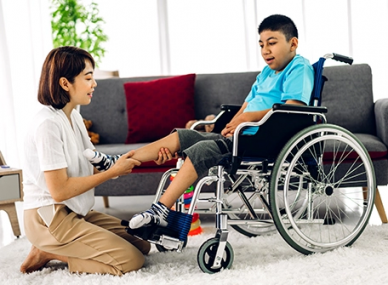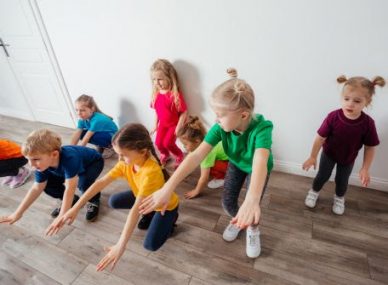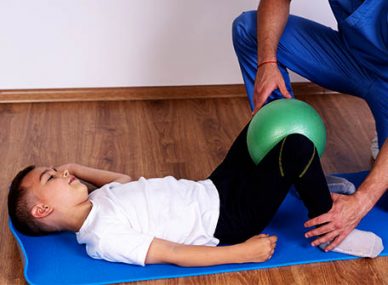Are you experiencing a gross motor delay in your child? Does your child act uncoordinatedly? How often does your child fall and bump into things?
Your child may benefit greatly from CME therapy if this is the case. As well as being physically beneficial, the Cuevas Medek Exercises will also be mentally beneficial.
CME stands for Cuevas Medek Exercise, a physical therapy method aimed at helping infants and toddlers with abnormal development of their motor skills caused by a non-degenerative condition of the Central Nervous System. As soon as a child reaches the age of three months, CME therapy can be applied until he or she is able to control and walk independently.
This therapy is based on the concept that developmentally compromised infants and toddlers must reinforce their natural recovery potential. After the sequelae develop, this feature of the central nervous system continues to propel your child’s development. Nevertheless, this ‘recovery potential’ is there as a natural reaction. It is therefore important to begin motor therapy as soon as the first signs of a delayed motor function appear.
CME physical therapy focuses on helping your child learn gross motor and functional mobility skills successfully and independently. As a child develops these skills, they gain a greater sense of independence, which contributes to a higher sense of self-esteem.
Pediatric CME physical therapy offers several advantages, but what are the most important ones? We have listed some of the most important benefits of CME therapy below to assist you.
With Cme Therapy, Your Child Will Improve In The Following Areas:
- Strength – CME improves your child’s strength against gravity
- Balance – CME therapy improves your child’s balance
- Range of Motion – Increases the range of motion of a joint
- Reflexes – Enhance automatic response in children (palmar grasp, asymmetrical tonic neck, labyrinthine, positive support, etc.).
- Tone – Enhance natural resistance in a muscle
What To Consider When Choosing A Physical Therapist For Cme
Cuevas Medek Exercises (CME) for Moderate Gross Motor Delays
Cuevas Medek Exercises (CME) can be very beneficial for children with gross motor delays. When there is a moderate gross motor delay, the patient generally exhibits atypical muscle tone problems, as well as an increase or decrease in flexibility and a slow maturation of motor skills. This category includes children with autism spectrum disorders, down syndrome, etc. Flexibility or muscle tone issues usually cause gross motor delays. Postural righting responses are stimulated by CME therapy.
During postural reflex stimulation, the child’s preferred motor patterns improve spontaneously. Thus, the compensatory movements the child makes to compensate for gross motor delay are replaced by skilled movements. When a child has moderate gross motor delays, he or she instinctively makes more sophisticated movements. Over time, the child will become less dependent on CME physical therapy services, and can then often be discharged from therapy entirely.
It has been proven that CME therapy can be beneficial for children with moderate gross motor delays. Pediatric gross motor delays cannot be treated better than with this Neurorehabilitation technique.
Severe Gross Motor Delays – Cuevas Medek Exercises
The treatment of a profoundly delayed child can sometimes prove to be extremely challenging. The children may have medical conditions and/or be unable to follow directions. Children are commonly stretched, rolled about, positioned in adaptive swings or standers, or bounced on therapy balls during traditional physical therapy sessions.
The CME physical therapy, on the other hand, targets the body’s reflexes, specifically the postural righting and recovery reflexes. In the event of slipping on ice, missing your step, or tripping over an unknown obstacle, your reflexes keep you upright. With repeated stimulation of postural righting reflexes, even children with the most medically complex conditions improve with their sitting balance, head and trunk righting, and overall mobility.
Get in touch with our CME therapists at Hope Abilitation Medical Center if you want to learn more about Cuevas Medek Exercises. All the information you need will be provided by them.
CMEs for ‘the non-coordinated child’
A Cuevas Medek Exercise (CME) stimulates the body’s postural reflexes. This therapy practice is very beneficial to children who are clumsy. When a child undergoes CME therapy, reflexive responses improve and gross motor performance improves, sometimes to an astonishing extent.
Our therapists at Hope Abilitation Medical Center can explain in detail how Cuevas Medek Exercises can help a non-coordinated child. All kinds of pediatric conditions can be treated with expert CME therapy at Hope AMC. Visit hope-amc.com for more information about CME therapy at Hope AMC





